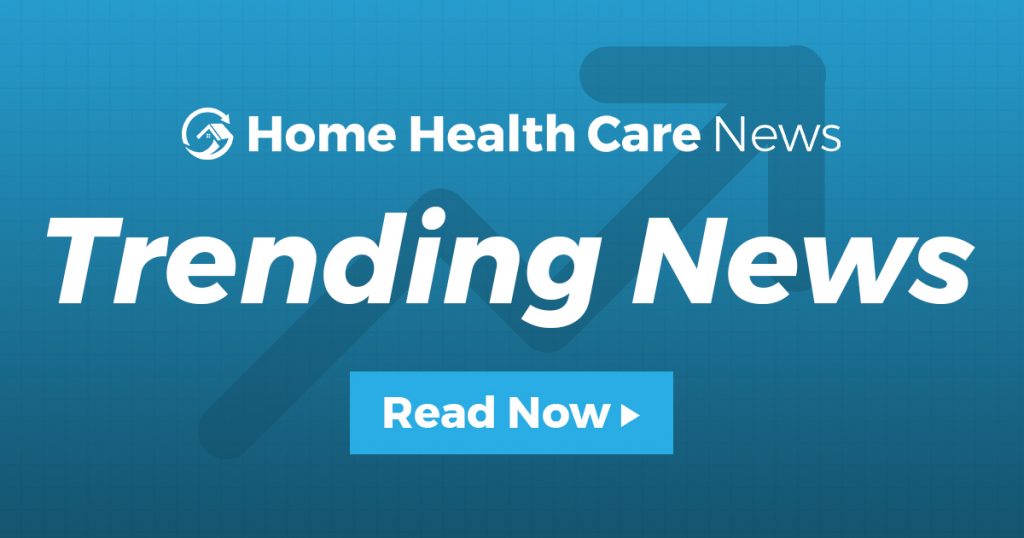
Amid Proposed Payment Cuts, Home Health Advocates Are Considering Greater Picture
Although it may seem like the federal government is picking on the home health industry in recent weeks, at least they are paying attention to an industry that continues to grow and is in high demand.
That was one of the many messages from William A. Dombi, the president of the National Association for Home Care & Hospice, at NAHC’s Financial Management Conference in Las Vegas this week.
Many insiders — Dombi included — will be quick to criticize the Centers for Medicare & Medicaid Services (CMS) about the new proposed payment rule, for instance.
He chose to look at the glass half full, at least for one night.
Dombi painted a rosier picture for the relationship between the two by pointing out CMS’ desire to expand the Home Health Value-Based Purchasing (HHVBP) Model.
“Why are they expanding HHVBP nationwide? Because it’s about the only value-based purchasing program that has been successful out of all the ones they did,” he said. “Showing that if you use home health care and have high performance, you’re going to save them billions of dollars in doing so. No other sector can say that, so the appreciation and respect is there.”
It’s also easy to get lost in the weeds during bouts of negotiations and the back and forth.
And Dombi said during his keynote address that it’s important to keep an eye on the ball, and that still starts with staffing.
“Workforce is our most important issue that we’re dealing with. It covers every sector within health care at home,” Dombi said Sunday. “We’ve got to solve that problem. Congress is now recognizing the health care workforce shortage, as well as the value that home care can bring in. Guess who else also recognizes the value? The Centers for Medicare & Medicaid Services.”
Innovating, advocating and adapting can only take you as far, in other words, as the staffing capacity you do have as a provider.
“We can sue the Medicare program on payment rate cuts, we can get the law changed by Congress,” Dombi said. “When we don’t like the outcome of that, we can expand access through regulatory and legislative efforts, but unless we have the staff, it really doesn’t matter.”
Getting the best reimbursement rates from the government would be nice, he said. Sometimes though, there are some bullying and muscling when economics are involved, and one side has to get the short end of the stick.
By focusing on staffing, hiring the best people and making sure patient outcomes is a priority, the industry will be better off no matter what, he said.
“We’re finding 30-plus percent of referrals to home care — be it in hospice, home health, home care, infusion therapy — are being rejected because of lack of staff,” Dombi said. “That’s not where we want this country to be in terms of health care.”
Big picture, keeping perspective
One of other messages from Dombi was for the home-base care industry to keep perspective on how far along it has come from the pre-COVID era to now.
“Beyond all the deaths, all the illness and all the trauma caused by COVID, what happened was an acceleration of the path that you all came on when you entered into this world of health care services of home,” Dombi said. “The ability to deliver patient-centered care is a hallmark of health care services at home. The contributions coming from the patients themselves and the family members, in terms of the care working as a team, is what happens with care in the home via hospice, home health or otherwise.”
Dombi reflected on the days when hospitals and nursing homes were scrambling to find room and resources for patients when COVID patients were filling up beds at alarming rates.
All over the country, the health care community relied on home-based care providers and leaders, who were ready to answer the call.
“Your versatility, your creativity and your depth was becoming known,” Dombi said. “All of these ideas of how health care should be delivered that are now being touted as original came from home care. Maybe nobody bothered to pay attention to what you were doing, but a lot of people have now, and COVID created a much higher awareness and a much greater degree of understanding.”